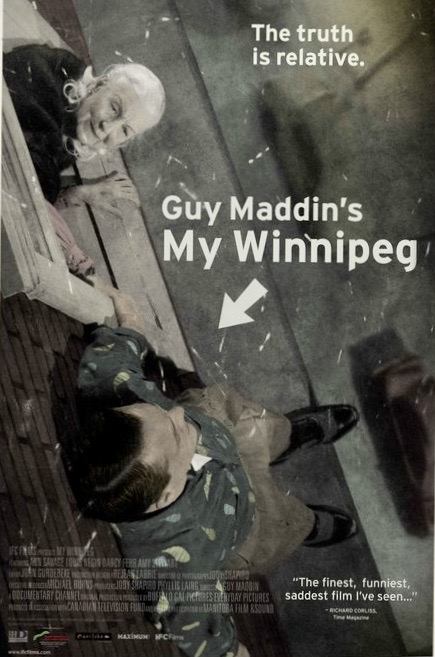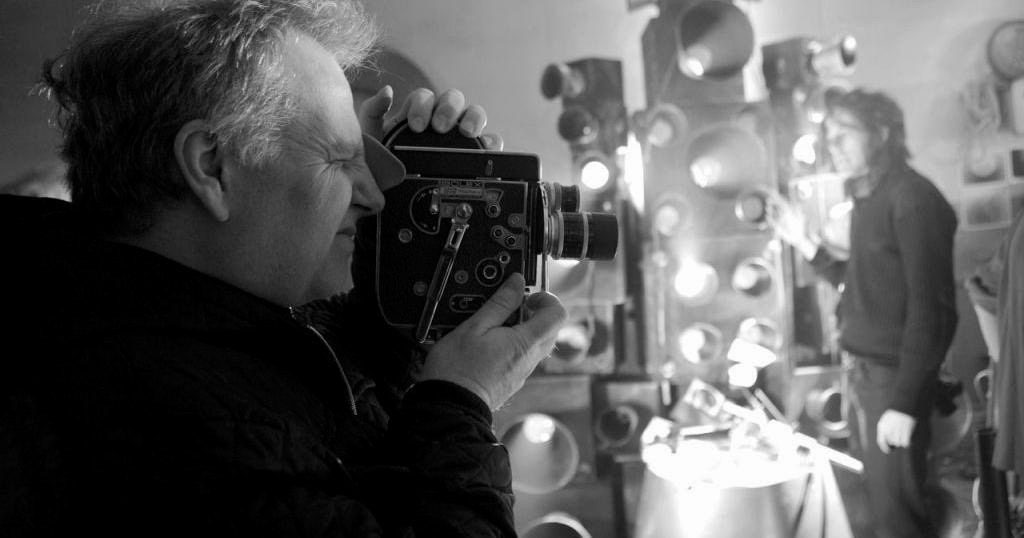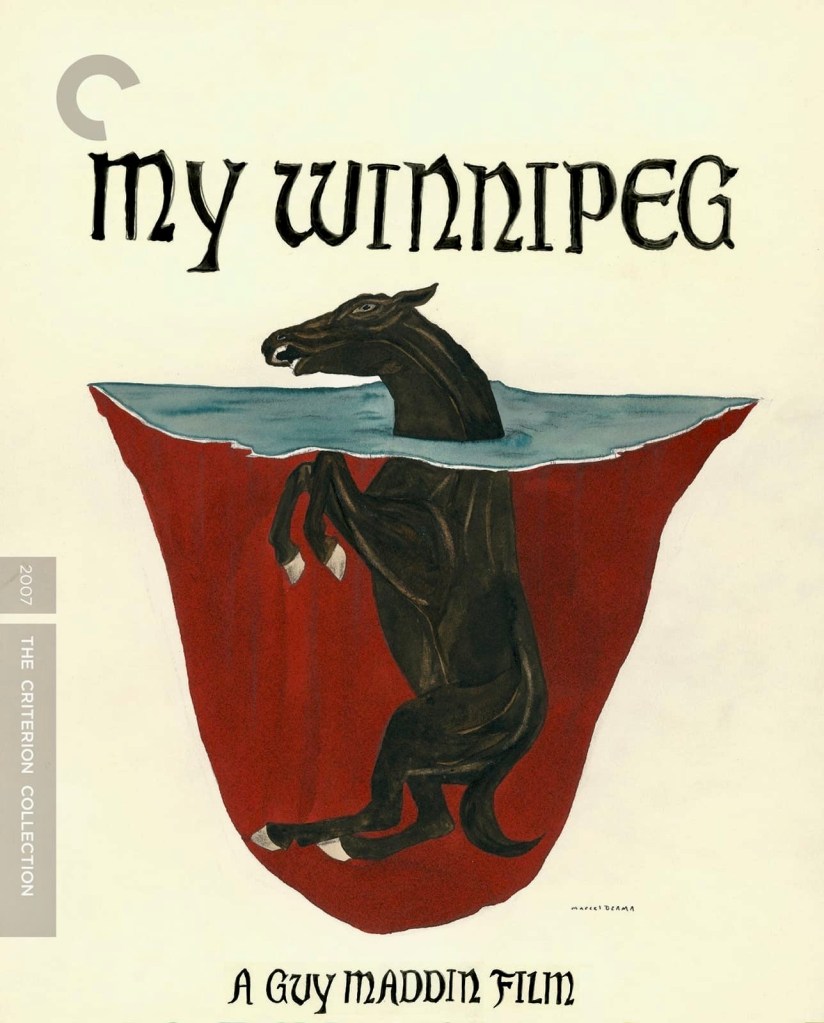How does a filmmaker begin to craft an autobiographical film of his or her own life? Many renowned directors have tackled it but usually by using a fictionalized version of themselves under a different name though many of the incidents depicted are true. Francois Truffaut did it with The 400 Blows (1959) as did George Lucas with American Graffitti (1973) and Sam Fuller in The Big Red One (1980). Even more recently Steven Spielberg re-imagined his childhood and teenage years in The Fabelmans (2022). But no one has ever made a more personal and dreamlike meditation on their roots than what Guy Maddin accomplishes with My Winnipeg (2007), which is set in the city where the Canadian director was born and resided for much of his life. Narrated by Maddin in a voice that sounds half asleep, half awake, our somnambulistic guide creates his own mythology about himself, his family and his home town that is utterly unique. Plus, his narrator approach is totally fitting for a city that allegedly has more sleepwalkers among its residents than any other major city.
To even call My Winnipeg an autobiography seems a stretch at best since its mixture of fact and fantasy take it into an otherworldly realm. One poster for it more accurately labeled it “a docu-fantasia.” What is most fascinating about the film is the way Maddin sees his whole life intertwined with his home town in ways that shaped him as an artist but also oppressed him and made him want to always escape, which is the crux of the movie.
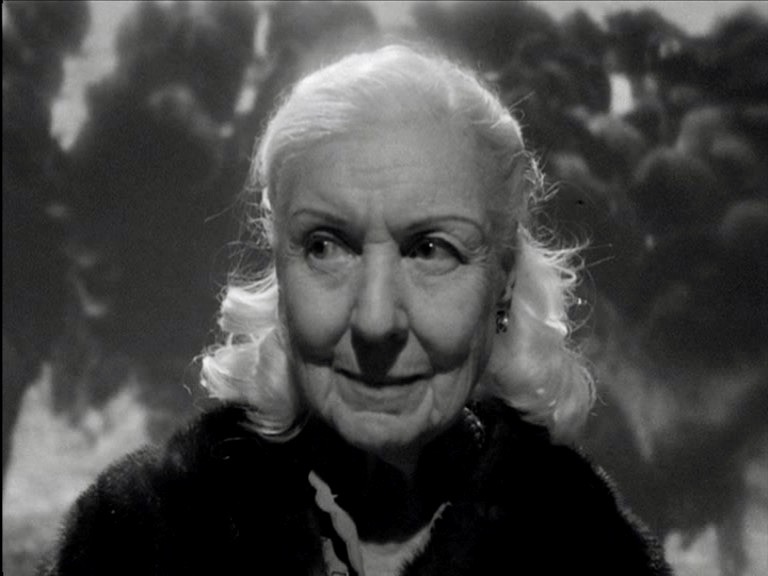
To give you some idea of his unconventional approach to autobiography, Maddin was able to rent the original family home (now owned by a new tenant) and to recreate the interiors to look exactly like his memories of the place. He hired actors to play himself and family members, including the inspired casting of forties femme fatale harpy Ann Savage (of 1946’s Detour) as his mother. But there were complications. The woman who leased the house for the film shoot decided she didn’t want to leave and insisted on staying so Maddin includes her in the family scenes in the living room where she sits silently in a chair observing everything but never interacting with the others. Maddin’s real life mother was alive at the time of filming (she died in 2011 at the age of 104!) and insisted that her son also include his long dead father as a character in the piece. He declined but came up with a compromise that made his mother happy. The dead father ends up being buried under a mound of dirt in the living room, which is covered by a large rug. This mixture of the surreal with the mundane is part of My Winnipeg’s quirky appeal.
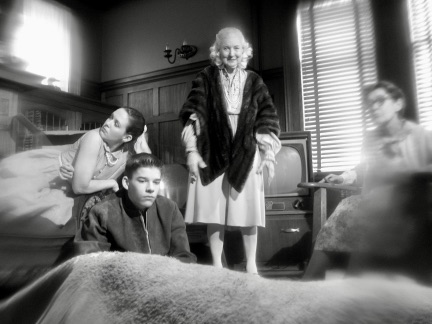
One is never sure while watching My Winnipeg on what really happened and what didn’t in Maddin’s recounting of the city’s history and geography along with personal family details. An older brother named Cameron committed suicide as a teenager, Maddin’s father died from a sudden, unexpected stroke and there are other depressing events that occurred in the history of Winnipeg that deeply affected Maddin such as the controversial demolitions of the historic 1904 T. Eaton Company department store, a city landmark, and the Winnipeg Arena (home to the Winnipeg Jets of the National Hockey League), which was destroyed and replaced by the super modern but soulless MTS Centre. “Demolition is one of our cities’ few growth industries,” he remarks at one point.

Yet a sense of sadness and melancholy over what Winnipeg committed in the name of progress is balanced by black comedy and a theater-of-the-absurd nuttiness that truly succeeds in mythologizing the city. A prime example is the recounting of “What If” day in Winnipeg, a staged hoax enacted in 1942 when the city leaders had Nazi soldier reenactors invade and take over the city. The initial purpose behind this bizarre event was to stimulate the sale of war bonds. Strange but true.
Equally bizarre is the story of a 1926 racetrack fire in which a horde of fleeing horses plunged into the nearby Red River and were frozen in the icy waters, their heads appearing above the ice like horse head sculptures as designed by some avant-garde artist. Another suspect recollection revolves around Winnipeg’s daily TV soap opera “Ledge Man,” in which a suicidal young man threatens to jump to his death over some new trauma, only to be talked out of each time by a concerned neighbor, who is played by Maddin’s mother.

For a movie that runs barely eighty minutes in length, the director manages to weave in a dizzying array of topics and historical anecdotes that range from a spiritualism cult among the city leaders to streets named after local prostitutes to the town’s famous steel bridge, which was originally built for use in Egypt but was rejected because the specs were wrong (so Winnipeg got a discount on the structure). Does it really matter if these events really happened? Maddin treats everything as if it were an actual event or memory and that is his artistic right as the director of his own autobiography.

In an interview with Kurt Halfyard for ScreenAnarchy, Maddin defended this approach, saying, “Documentary has elastic enough borders, especially now, everyone understands that there is no such thing as a completely honest documentary. Everything has a point of view…I guess a lot of people have been very adversarial saying “What is true? What isn’t true?” Just going through a check-list of what is fact in the movie and what isn’t…[The film] was assigned by the documentary channel. Michael Burns there said, “Show me Winnipeg – that is your assignment – and make it ‘Your Winnipeg.’ ” And so I quickly realized that I couldn’t separate my home, my family, my hometown; they are inextricably tangled up. To show my Winnipeg, I had to show myself and so this thing kind of evolved to whatever it is. It is a real kind of hybrid of things.”
Most of Maddin’s early work was shot on film in black and white and often resembled early talkies crossed with Sergei Eisenstein-like Soviet filmmaking techniques from the silent era. My Winnipeg, however, is a much more radical approach to his usual visual aesthetic as noted in the ScreenAnarchy interview: “I shot My Winnipeg on mini-DV, HD, Video, Super-8, 16, then there is stock footage, animation shot on video, animation shot on Super-8 and then there is rear-screen stuff which was video reshot on film and so you get really weird digital artifacts and weird bars and flickers and sometimes I like and sometimes I love and sometimes I don’t.”
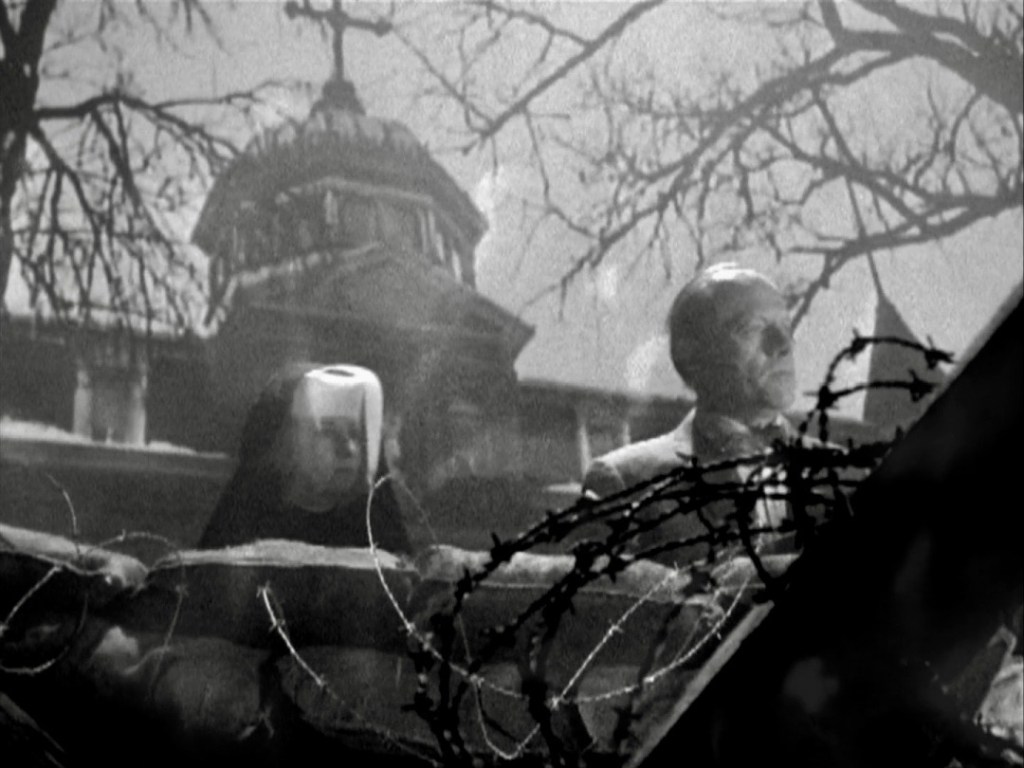
Maddin has made more than 65 short films and features since he started making movies in 1985 but few, if any of them, have ever enjoyed a wide commercial release or played in mainstream commercial cinemas. He first attracted critical attention for Tales from the Gimli Hospital (1988), a macabre account of two male smallpox victims and their experience in a female-staffed hospital. The movie was primarily programmed as a midnight film offering that came at the end of that brief phenomenon that transformed El Topo (1970), The Rocky Horror Picture Show (1975), Eraserhead (1977) and other cult pictures into underground hits.
Tales from the Gimli Hospital didn’t really find an audience until it was released on home video but Maddin continued to perfect his craft and enjoy a growing fan base with subsequent works like Archangel (1990), which featured an amnesiac soldier wandering through rural Russia during the Bolshevik conflict, and Careful (1992), a homage-of-sorts to the German mountain movies of the 1930s like The Blue Light (1932), which starred Leni Riefenstahl.
Still, it has to be said that Maddin’s movies are an acquired taste and definitely not audience-friendly for the moviegoing multiplex crowd. But, among his large body of work, My Winnipeg might be the best gateway film for beginners. A second choice would be the The Saddest Music in the World (2003), a melancholy fantasy/musical starring Isabella Rossellini as a beer baroness who lost both her legs in an accident and had them replaced with glass limbs filled with – yes – beer!
It goes without saying that My Winnipeg probably earned the best reviews of Madden’s career resulting in the filmmaker’s decision to take a break from feature film production for several years. Too much success can be debilitating for some directors but the critics were right about My Winnipeg being a breakthrough movie. Peter Bradshaw of The Guardian probably said it best when he wrote, “It’s a drowsy paean to his hometown of Winnipeg. The drowsiness is deliberate, a willed drowsiness, a self-administered anaesthetic to dull the pain of a vanished childhood and the blue remembered hills of a hometown from which the adult is debarred….The film is actually far funnier than anything he’s given us before, and there is, moreover, something on offer not readily detectable in his work up to now: that is, sincerity, a sense that what he’s talking about matters, personally, to him. Maddin’s getting real – as well as surreal.”
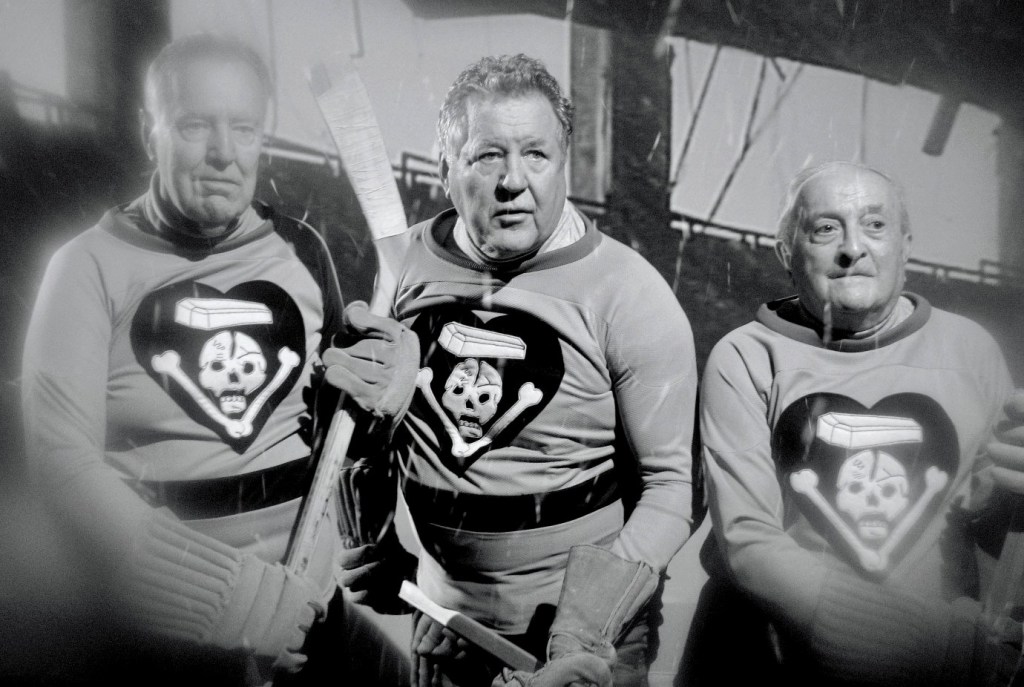
My Winnipeg was the third film in an autobiographical trilogy by Maddin which began with Cowards Bend the Knee (2003) and continued with Brand Upon the Brain! (2006). The director later confessed in an interview with Christopher Bell for Indiewire, “I did “Brand Upon The Brain” and “Cowards Bend The Knee” and the protagonists were named Guy Maddin. I felt sick of myself after this. Making movies is a form of therapy for me —you cure yourself of whatever obsession you have, so I’m sick of myself now. I’ve been able to move on.” True to his word, Maddin continued to forge ahead with mind-bending experimental features like The Forbidden Room (2015) and The Green Fog (1917) and is still working as he approaches age 70 (he was born in February of 1956).

Your best option for viewing My Winnipeg is the January 2015 Blu-ray release from The Criterion Collection which includes a conversation between the filmmaker and art critic Robert Enright, five Maddin film shorts, four cine-essays on Winnipegiana by Maddin and filmmaker Evan Johnson and much more.
Other links of interest:
https://web.archive.org/web/20121014180211/http://thecanadianencyclopedia.com/articles/guy-maddin
https://www.thecanadianencyclopedia.ca/en/article/winnipeg
https://www.cbc.ca/news/canada/manitoba/creeks-streams-winnipeg-history-1.4641823

